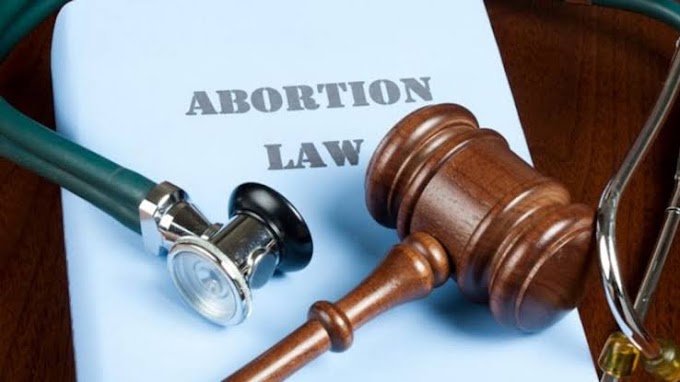THE CONCEPT OF DYING DECLARATION UNDER THE INDIAN EVIDENCE ACT,1872
Article by- Shivanshi Shukla, a Student of University of Petroleum and Energy Studies, Dehradun.
INTRODUCTION
The concept of Dying Declaration has been stated under the Section 32(1) of the Indian Evidence Act, 1872. It states that, statements written or verbal, of relevant facts – made by a person who is dead are themselves relevant facts in the following cases i.e., the cases in which the cause of person’s death is in question –
When the statement is made by a person is as to the cause of his death.
When the statement is made in context to the circumstances of the transaction which resulted in his death.
This rule comes as an obvious exception to the rule that hearsay evidence should not be permitted, as the person who has the knowledge of the facts mentioned about in the section, is dead, any person to whom the statement referred to in the section has been made, could give evidence as to what he heard, and it will be admissible.
The reasons for admitting such evidence are as follows:
That it is the best evidence available.
The occasion is solemn and the dying man is face to face with his maker without any motive for telling a lie. Law presumes that in Leterm Mortem i.e., in his last parting words the man will never lie as anyone will meet his maker with a lie on his lips.
Thus, these kinds of statements are known as Dying Declaration, and if the dying man makes it on an oath to a Magistrate, it will be called Dying Deposition.
A Dying Declaration, however, is always relevant, to whomsoever it might have been made. It does not matter whether it is made to a prince or a pauper, policeman or a Magistrate.
CONDITIONS FOR DYING DECLARATION TO BE APPLICABLE ARE:
It must be a voluntary statement, either written or verbal:
The word ‘verbal’ has been interpreted to mean not only verbal i.e., ‘oral’ but also as including gestures made by a dying man, unable to speak, in answer to questions put to him, as held in Chandrasekhara alias Alisandiri vs. The King, [1937] AC 220.
When reliance is to be placed upon a dying declaration, the court must be satisfied that the declaration was true, voluntary and not a result of either tutoring or prompting or a product of imagination.
If a dying declaration is found to be reliable, there is no need for corroboration; conviction can be sustained on that basis alone, as stated in Prempal vs State of Haryana, (2014) 10 SCC 336.
The statement made, must relate to the cause of his death or the circumstances of the transaction which resulted in his death and not the cause of death of someone else:
At a time, it was thought that only statements made after person was injured and under apprehension of death, would come under the Section 32(1), but the phrase ‘circumstances of the transaction’ was wide enough to include statements made before the person received any injury.
In Ranjit Singh vs. State, 1966 CriLJ 336, it was held that letters written by a person three years before his death referring to various incidents showing that relations between himself and his wife were strained, and entries in a diary kept by him relating to the arrival and stay of her paramour and the incidents which then occurred, were admissible as relevant under the dying declaration clause in a trail against the wife and her paramour for the murder of the husband.
The cause of person’s death must be in question:
A dying declaration would be relevant in any proceedings, may it be civil or criminal, where the cause of the death comes into the question.
CASE LAWS RELATED TO DYING DECLARATION:
Pakala Narayana Swami vs Emperor (1939) 41 BOMLR 428:
A box containing a dead body was found in the third coach of the train. After a few days, the wife recognised the dead body to be of her husband who was now no more.
The court held that the statement made by the deceased to his wife when he was going to collect money from some person was admissible as a Dying Declaration under Section 32(1) of the Indian Evidence Act,1872.
Sharad Birdhi Chand Sarda vs State of Maharashtra 1985 SCR (1) 88:
In this case, a married woman had been writing to her parents and to her relatives about her critical condition at the hands of her in-laws. She lost her life in some four months later. Her letters were held to be admissible in the court as dying declaration.
The court held that the proximity depends upon facts and circumstances of each case.
Queen-Empress vs Abdullah (1885) ILR 7 All 385:
The Allahabad High Court, held that no particular form of recording of statements is prescribed.
Therefore, a dying Declaration can be either in the form of an oral statement, written, gesture, or other, if any. Any dying declaration made through signs and nods is also relevant.
Kushal Rao vs The State of Bombay, 1958 AIR 22:
In this case, the court observed that it is not an absolute law nor it is the law of prudence that a dying declaration cannot be made as a sole basis of conviction.
If it is recorded by a competent authority in a proper manner and the court is satisfied with the veracity of such a dying declaration, it can then be considered as the sole basis of conviction.
REFERENCES
https://www.writinglaw.com/dying-declaration-under-evidence-act/
https://www.northeastlawjournal.com/post/dying-declaration-meaning-modes-and-evidentiary-value




![Freedom of Speech in India [Indian Supreme court and Law of Sedition]](https://blogger.googleusercontent.com/img/a/AVvXsEiGLLUmLKq5Da6xDZplasOZHKRj-jOhWPkoeuy0_Eq757tUpOiHz-xooXwIlAjF0-hmBfi-TtMIv6on_sVgBXVq4wbWwnbsqLOcNX22S8C2aSq-ZuK3vn9wWAx8tXByYOBfwc0hs6b8RJV84YNFG2greouGKjup6g8kN-xVlchW33VHdSSmrhLC1BUEVbGp=w680)





